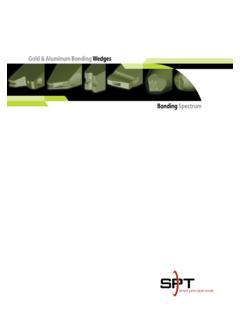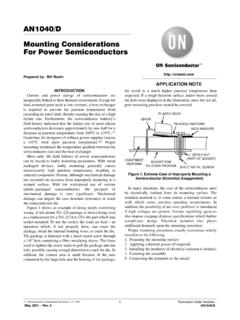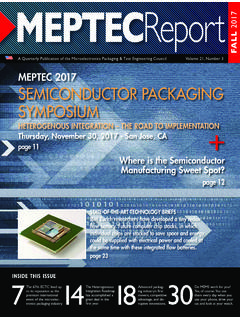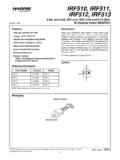Transcription of ANATOMY OF AN APPLICATION AUTOMATIC …
1 ANATOMY OF ANAPPLICATION:AUTOMATICALIGNMENT IN West Automated Vision Systems, Table of Contents 1 Generic alignment Procedure .. 1 Prealignment .. 1 History .. 2 Manual Methods .. 2 Mechanically Scanned Point 2 Binary Correlation .. 3 Projection .. 4 Current applications .. 7 Wafer 7 Film Thickness Measurement .. 10 Remaining 12 Conclusion .. 13 14 Glossary .. 15 1 Introduction AUTOMATIC alignment , used extensively in the semiconductor industry, includes both front end wafer fabrication and back end test, assembly, and packaging (TAP) processes. This white paper presents two such AUTOMATIC alignment APPLICATION case studies one from the back end test area, the other from the front end of the process and shows how each APPLICATION evolved, lessons learned along the way, and the resulting impact on today s best practices.
2 Of course, AUTOMATIC alignment is not limited to the semiconductor industry, but is widespread throughout all manufacturing industries using AUTOMATIC assembly equipment. Thus, the lessons learned from the two case studies detailed here can be applied to a wide spectrum of potential applications . Generic alignment Procedure The alignment of wafers is a superset of the alignment of die and includes 1) prealignment to correct for coarse angular and translational mispositioning and 2) die alignment that provides precision location keyed to specific features on the individual semiconductor die. Although this paper focuses on die alignment , a brief look at wafer prealignment is included below. Prealignment The most common method of prealignment is to transfer the wafer onto a chuck where it is rotated while the radial distance from wafer edge to center of the chuck is measured.
3 The sequence of these radial measurements is used to determine the centering of the wafer on the chuck, its translational position, and the location of flats or notches on its periphery which defines its rotational orientation. The movement of the chuck assures rotational alignment , and the mechanism ( , robot) that then transfers the wafer to the workspace compensates for its translational misalignment. In this way, prealigners typically are able to align the wafer to within a degree of rotation and a few thousandths of an inch in translation. Ultimately, prealignment accuracy in knowing where die are located relies on the precision of the prealigner, the precision of the wafer transport mechanism and the precision with which die are placed on the wafer.
4 With modern photolithography, device locations can repeat from wafer to wafer to within a few thousandths of an inch. 2 History This section reviews the most prevalent means of achieving alignment in the past, including 1) manual methods, 2) mechanically scanned point sensors, 3) binary correlation and 4) projections. Manual Methods Originally, alignment was a manual process, with operators looking through a microscope, verifying correct die positioning, and then making any needed adjustments of die or wafer by hand. This was a slow, fatigue-inducing operation with a high yield loss due to misalignment, even among the most conscientious operators. The main challenges with manual alignment were low speed and yield loss associated with occasional inaccurate alignment .
5 Although the equipment using manual alignment was much less expensive than the same equipment using AUTOMATIC alignment , the low speed of the process required more equipment, more operators, and more floor space. Furthermore, even though alignment -intensive operations such as wire bonding were relocated to areas with low labor and real estate costs, it was ultimately the yield loss incurred with manual methods that made AUTOMATIC alignment an economic necessity. Even so, for many years, companies resisted replacing manual equipment with equipment enabling AUTOMATIC alignment . They realized that operators, once they gained experience, were adaptable, whereas the available systems were not. This adaptability was evident in both training for a new part and in problem solving.
6 Experienced operators could adapt to a new part using only written instructions, and could, in effect, be trained off-line. Similarly, if a problem arose with the pattern used for alignment part of it was missing or occluded, for example the operator was able to adapt and use the remaining portion of the pattern to continue working. These same attributes of adaptability have emerged only recently in AUTOMATIC alignment techniques. This technique, relying on manually operated equipment, requires much less in terms of capital expense compared to AUTOMATIC alignment . Even so, the savings in yield loss alone makes automated equipment a profitable investment, even in areas with low labor costs.
7 Mechanically Scanned Point Sensors Two early attempts at AUTOMATIC alignment relied on point sensors, with the wafer mechanically translated below the sensor. In one instance, a Japanese manufacturer of wafer probers used a laser-based point sensor to detect the streets between die on the wafer. Mounted on a stage, the wafer was mechanically translated under the sensor; since streets at that time were generally clear of any pattern, the sensor s signal could be analyzed to find repetitive patterns correlating to the streets. Although low cost, this technique was also slow, requiring repeated mechanical movement of the wafer. As testing costs rose, the process became more expensive because of the time needed to align the wafer.
8 Also, this approach required relatively wide streets free of patterns. However, as technology progressed, streets became narrower and included test patterns which used to take up space of die, rendering the point scanning approach unreliable as well as time-consuming. What was needed and is used today: an alignment technique using features on the die themselves, and able to recognize features unique to each individual die design. 3 In another instance in the late 1970s, an equipment manufacturer used a fiber optic sensor to automatically align individual die for testing. The die required a particular fiducial pattern that allowed for detection by mechanical scanning. While this approach proved workable for a very specific purpose, the need for mechanical scanning meant slow output.
9 Also, the fiducial pattern was programmed into the equipment and could not be changed by the user, precluding its continued use as products evolved. Today, of course, semiconductor real estate is too expensive to allow space for a dedicated fiducial target. As in the previous example, what was needed and is used today: an alignment system able to recognize features inherent in the design of the individual devices without requiring a fiducial mark or other predefined feature. Binary Correlation The first commercially viable AUTOMATIC alignment , developed in 1978, used a technique called binary correlation, whereby an image template is compared with the contents of a search region. The template must be no larger than the search region and normally is significantly smaller.
10 For each possible position of the template within the search region, the number of pixels which agree in the two regions are totaled. The result is an array of values in which a peak indicates a best match. Mathematically this is represented as: 10,101010,,,+ + = == ==++JYyIXxSTCJjjIiijyixyiyx where: Cx,y is the correlation result total at location x,y Ti,j is the template image data at coordinate i,j Sx,yis the search region at coordinate x,y I is the number of columns in the template ( , 0=I=I-1) J is the number of rows in the template ( , 0=j=J-1) X is the number of columns in the search region ( , 0=x=X-1) Y is the number of rows in the search region ( , 0=y=Y-1) In the 1978 implementation, the template was fixed at 64 x 64 pixels, and the search region was fixed at 192 x 192 pixels.







